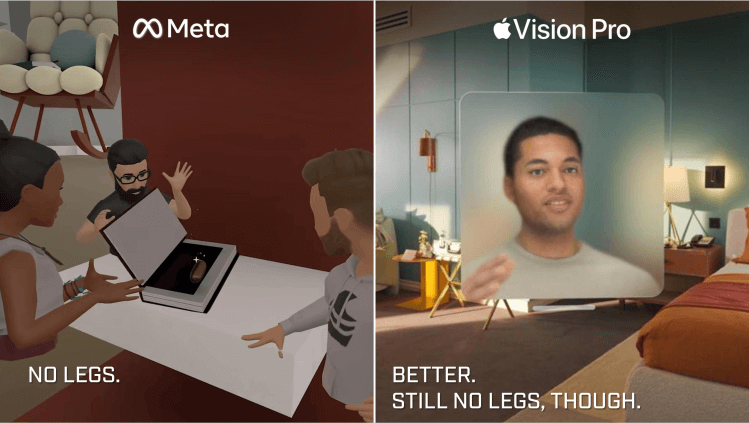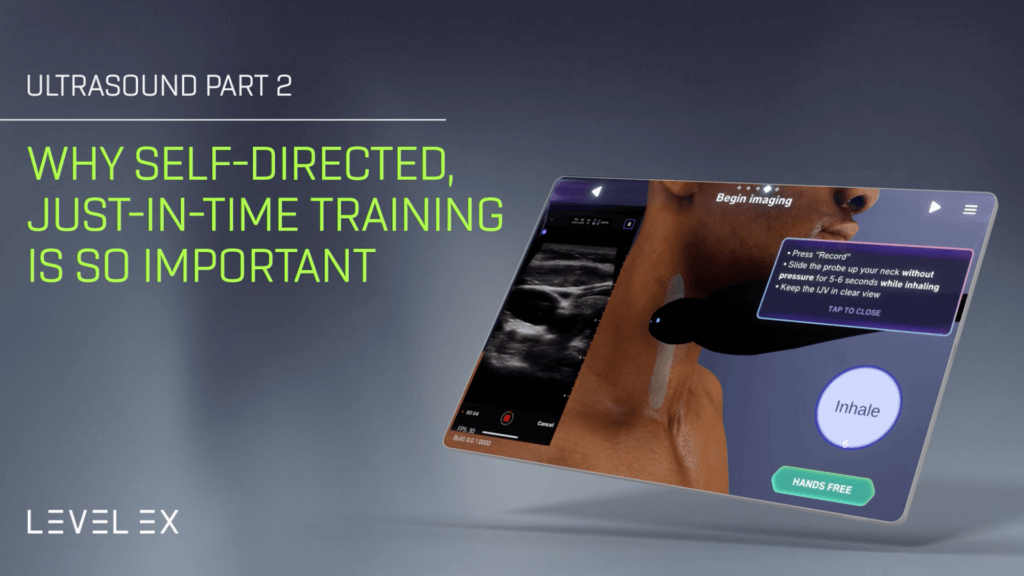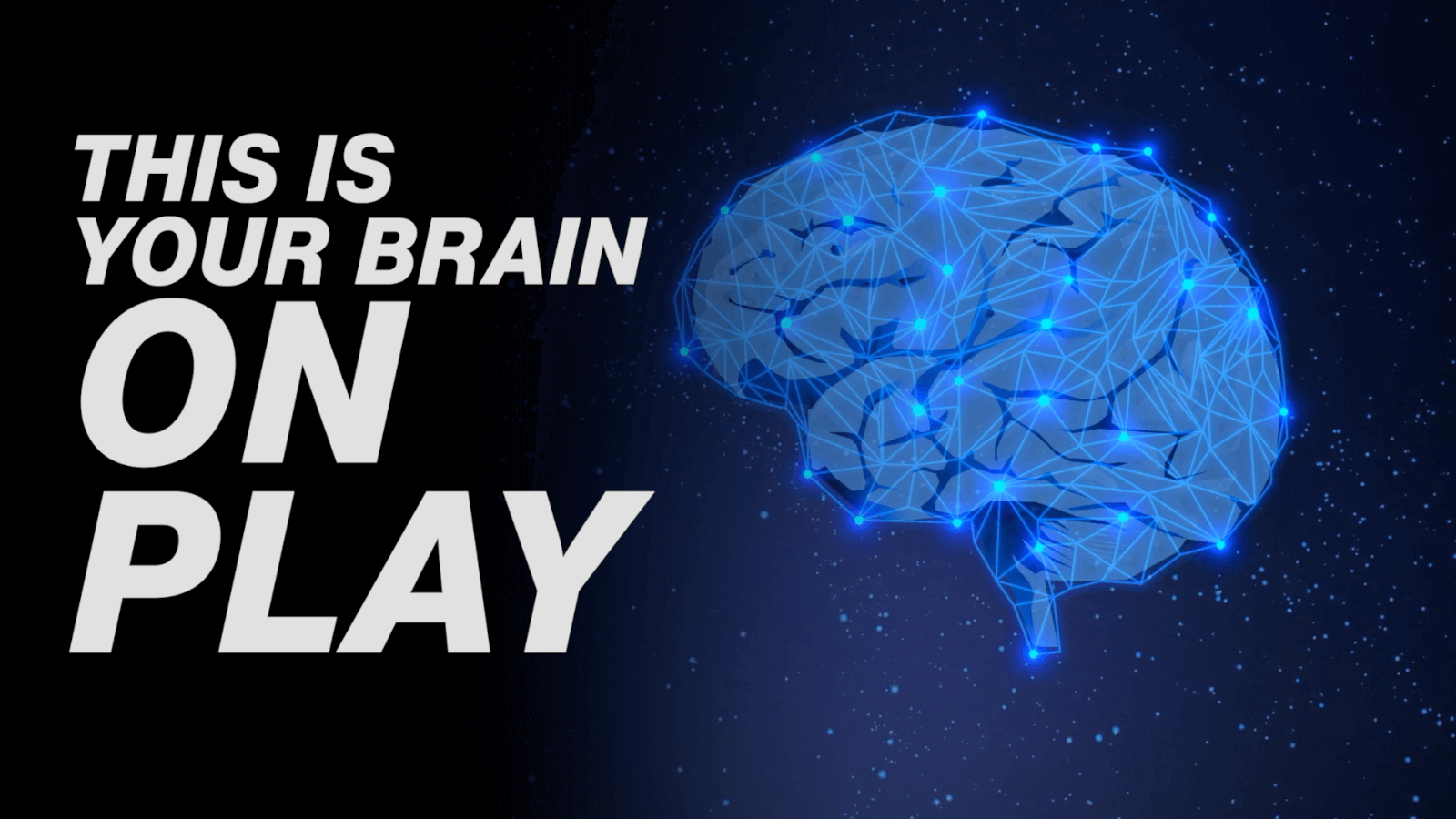
The Future of Education: This is Your Brain on Play
A learning theory expert weighs in on why games are so effective for understanding concepts
Think about the last time you had to learn something—really truly master a concept. Was it fun?
Maybe you had to study for a board exam. Maybe you had to understand market research for work. Maybe you had to understand basic geometry to help your kid with her homework.
Did you relish the experience? Did you lose yourself in it?
Chances are you did not. Chances are it wasn’t your definition of fun.
Now imagine a world in which learning of all kinds, across all ages, is actually delightful. You look up at the clock and realize you’ve lost track of time because you enjoyed what you were doing so much—and you learned.
Why isn’t this the norm yet?
Sure, there’s lots of talk about how to make education more engaging and enjoyable, and teachers think about this all the time when planning their curriculum. But as many of our own personal experiences will tell us, these are isolated incidents.
Which brings us to the answer to this question and the core of the problem— a fundamental flaw in how we think about learning and fun.
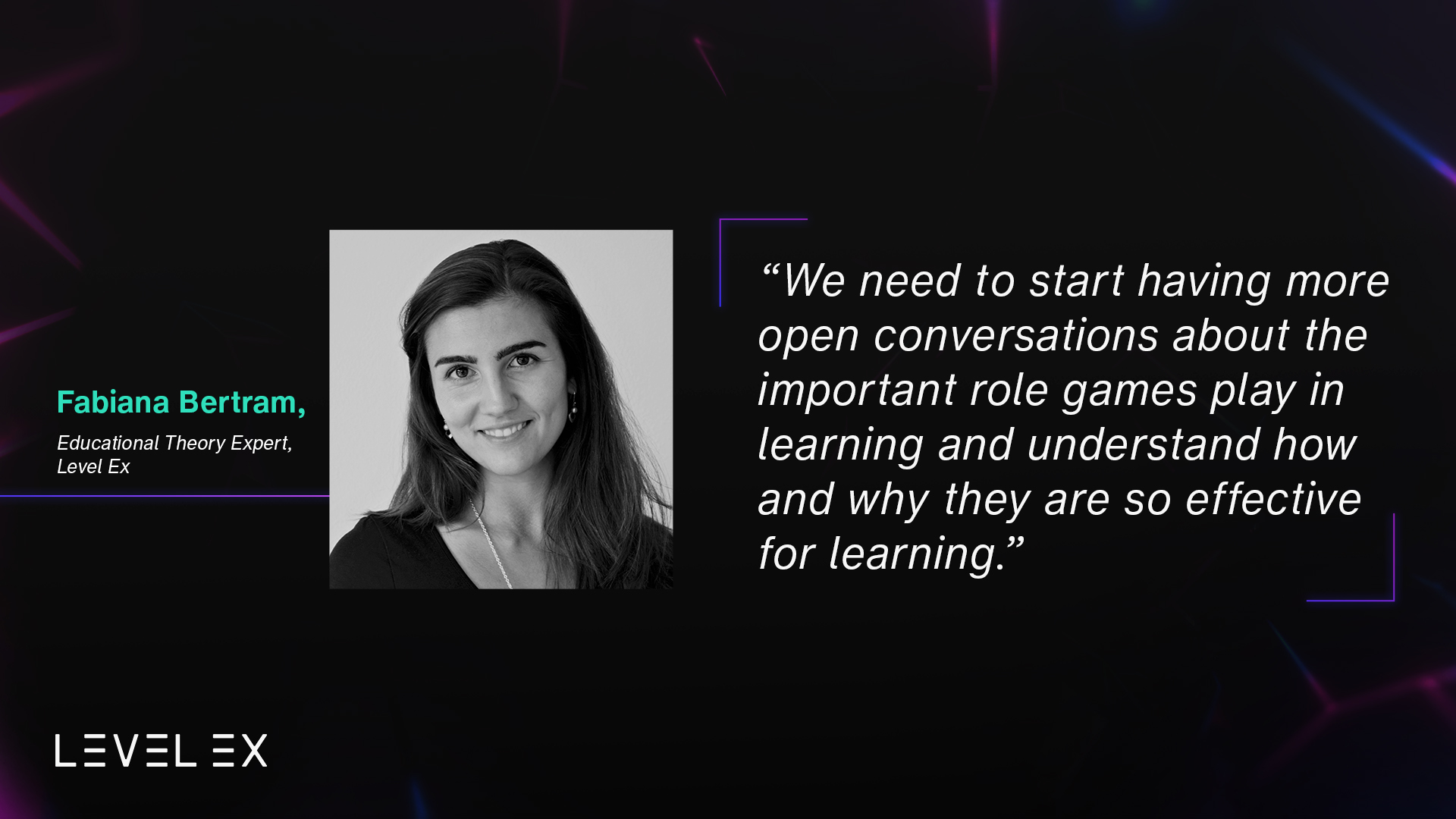
Educational value and fun have for too long been seen as two mutually exclusive ends of a spectrum, an either-or-dichotomy within individual learning opportunities: textbooks are for learning while video games are for off time. In recent years, there have been attempts to bring these types of activities together, for example adding quizzes to textbooks or “gamifying” teaching lessons by inserting mechanics like trivia or timed races. But this is just slicing the cake up differently— sprinkling a little “fun” there, breaking from learning for a little gaming here, and sometimes subordinating quality of content to fun or the other way around.
Instead, we should be duplicating the cake (yes, learning is so fun we can have our cake and eat it too). When we do this, 100% of the learning piece is fun and simultaneously 100% quality and education.
We need to turn our learning into games.
Across hundreds of studies, researchers have found significantly higher cognitive gains for training groups taught with interactive simulations and serious games6,9.
Games are truly effective – if not the most effective approach – for learning.
It’s especially noteworthy that gameplay is proven effective for improving adults’ work competencies, with studies demonstrating a 20% increase in self-efficacy, 14% and 11% better outcomes in terms of procedural and declarative knowledge, respectively, and nine percent higher knowledge retention rates7.
But why is that the case? There are three key psychological and neurological theories and evidence to explain this effect. Understanding them may be the key to instilling the confidence and insight we need to more fully adopt games as a learning method.
Accidentally Learning
I pledge allegiance to the flag of the United States of America,
and to the republic for which it stands, one nation …
Did your mind just automatically complete the pledge of allegiance said in classrooms across America since an early age?
Many of us have memorized these lines and we can easily reproduce this knowledge—without having studied it intentionally. We did not write it down, it wasn’t tested in an exam and we did not receive a grade, yet somehow we learned it anyway and it’s stuck in our minds for decades.
Why?
Learning is not limited to school. We learn every day of our lives—new exercise routines, the lyrics to our favorite songs, the name of our kids’ friends at school, or how to use a new coffee machine. Incidental learning, as in these examples, is just as efficient as intentional learning11.
This ability of the brain to learn something on the fly, accidentally, is part of what Level Ex taps into when it creates and releases video games for doctors. Rather than sitting down to consume incredibly important and dense material in the form of lectures, slide presentations, videos, and textbooks as has been the case for many years, medical professionals can pull out their phones to play a game. Instead of intentionally thinking “I am going to learn now”, they think “I’m going to have fun now”. But as they are playing, their minds absorb the information and build models for the skills they are practicing—just like yours does with the lyrics to your favorite song.
Flow into a Zone of Proximal Development
Somewhere between what a student already knows and what a student isn’t ready to learn, lies a “magic middle” that educational theorists refer to as the Zone of Proximal Development (ZPD)10. In short, the most effective and efficient learning happens when students are kept at the edge of their abilities. The tricky part is that this sweet spot differs greatly between learners. In other words, what’s just the right amount of challenge for one student might be absolutely overwhelming for another.
Effective teaching needs to aim for each learner’s individual Zone of Proximal Development, to adapt to different learning paces and preconditions. Doing this through conventional teaching methods? Practically unachievable. Doing this through video games? A piece of cake.
The concept of ZPD is in large part the secret sauce that game developers have perfected from years of creating games that have reached billions of people—billions of learners—all over the world. To teach players how to find the hidden gems in a cave, defeat zombies, or stent a beating heart before the clock runs out, games don’t alternate between ‘gaming’ and ‘learning’ or add on “fun” widgets. They do so by integrating it all into one experience that keeps players in the perfect balance of challenge and skill.

Did you ever sit down to do something you enjoy before bed and then suddenly notice the dawn breaking outside your window? What felt like a half an hour to you was, in reality, a day’s work. You didn’t get abducted by aliens or slip through a crack in the fabric of spacetime—you were simply in a heightened state of engagement.
This is the essence of Cognitive Flow3, a state of deep concentration and task absorption that makes a person feel at one with the activity. Since it provides the most beneficial environment for knowledge acquisition, any type of learning activity should aim to enable learners to enter this state of cognitive flow5.
Searching for Reward: The Neuroscience Behind Games
We’ve looked at the theories and features of games themselves that make them effective for learning. Now let’s go deeper inside the human brain.
The reward systems of the brain are a group of structures that activate whenever we experience something rewarding, such as eating a nice tasting food, sex, or drinking coffee. When exposed to such a stimulus, the brain responds by releasing an increased amount of dopamine. This neurotransmitter for reward and pleasure is then transported from the midbrain to the frontal lobes, the region responsible for high cognitive functions like thinking or planning1,2,8.
These dopaminergic pathways can be activated through what we refer to as interrogative goals, or a search for reward4. Driven by dopamine, this type of motivation aids in encoding, consolidation, and recall of relational representations of multiple aspects of the environment–that is, it creates long-lasting, embedded memories.
How are these neuroscientific concepts connected to games and learning? Games create interrogative goals that in turn activate reward pathways and thereby create relational long-term memories—which equals effective learning! Indeed, research has shown that “gamification encourages inquiry, collaboration, and the exchange of ideas while avoiding unwanted stress that affects students’ abilities, unlike other teaching tools”4.
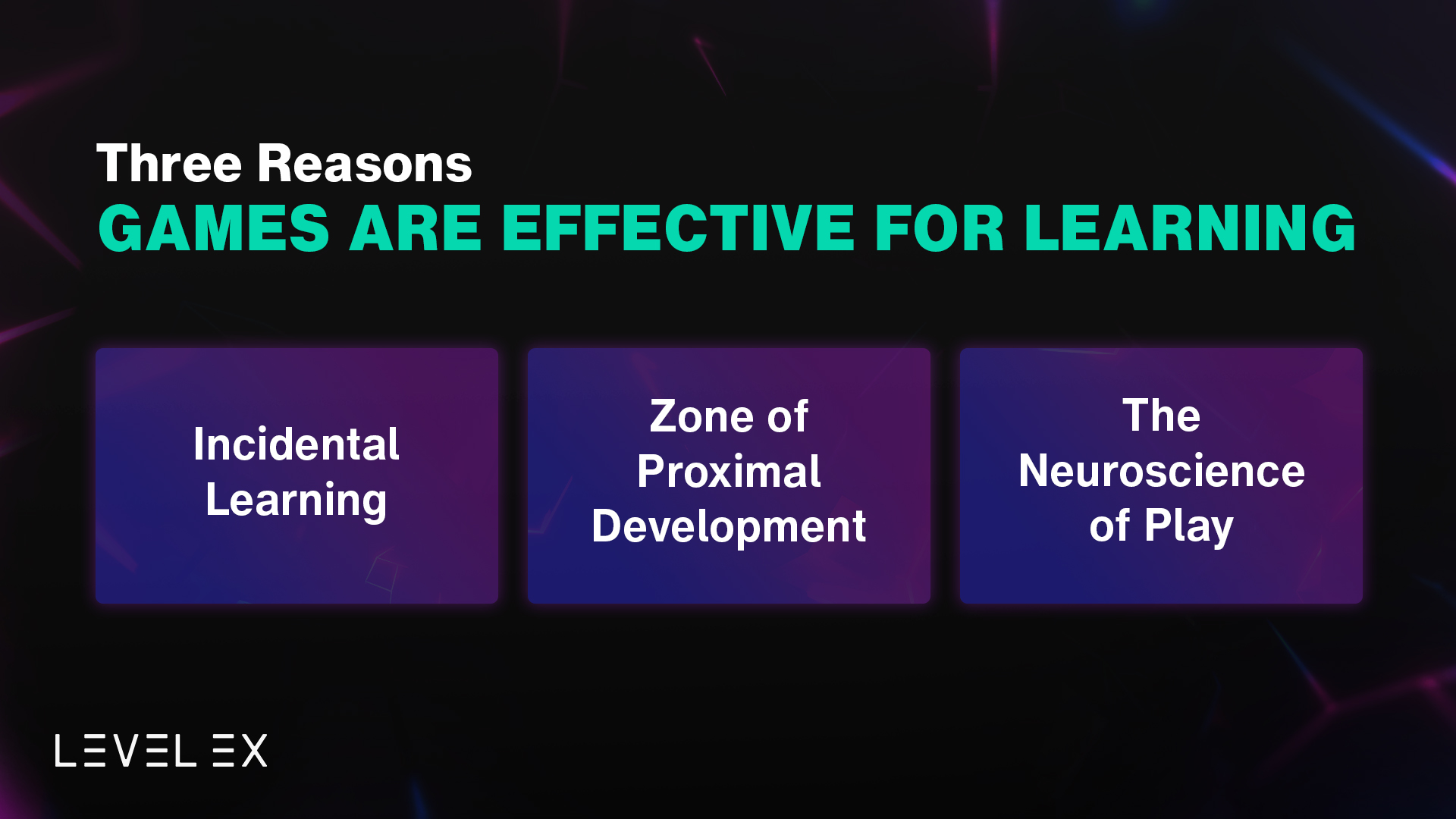
In contrast, most people don’t exactly get a dopamine rush from a textbook.
So how can we get to a place where games are freely integrated into education as a modality for learning?
We need more interdisciplinary research to differentiate exactly what aspects make games effective for learning. We also need to start having more open conversations about the important role games play in learning and understand how and why they are so effective for learning.
Only then will we be able to overcome the mutual exclusivity of “learning” and “fun” and get to a place where learning is fun—a place where games have been accepted as an effective modality in education for all.
References
- Arias-Carrión, O., Stamelou, M., Murillo-Rodríguez, E., Menéndez-González, M., & Pöppel, E. (2010). Dopaminergic reward system: A short integrative review. International Archives of Medicine, 3, 24.https://doi.org/10.1186/1755-7682-3-24
- Baik, J.-H. (2013). Dopamine Signaling in reward-related behaviors. Frontiers in Neural Circuits, 7, 152.https://doi.org/10.3389/fncir.2013.00152
- Csikszentmihalyi, M. (1991). Flow. Harper Collins.
- Luria, E., Shalom, M., & Levy, D. A. (2021). Cognitive Neuroscience Perspectives on Motivation and Learning: Revisiting Self-Determination Theory. Mind, Brain, and Education, 15(1), 5–17.https://doi.org/10.1111/mbe.12275
- Moneta, G. B. (2018). Cognitive Flow. In J. Vonk & T. Shackelford (Eds.), Encyclopedia of Animal Cognition and Behavior (pp. 1–5). Springer International Publishing. https://doi.org/10.1007/978-3-319-47829-6_1587-1
- Riopel, M., Nenciovici, L., Potvin, P., Chastenay, P., Charland, P., Blanchette Sarrasin, J., & Masson, S. (2019). Impact of serious games on science learning achievement compared with more conventional instruction: An overview and a meta-analysis. Studies in Science Education, 55, 169–214.https://doi.org/10.1080/03057267.2019.1722420
- Sitzmann, T. (2011). A Meta-Analytic Examination of the Instructional Effectiveness of Computer-Based Simulation Games. Personnel Psychology, 64(2), 489–528.https://doi.org/10.1111/j.1744-6570.2011.01190.x
- Tritsch, N. X., & Sabatini, B. L. (2012). Dopaminergic Modulation of Synaptic Transmission in Cortex and Striatum. Neuron, 76(1), 33–50.https://doi.org/10.1016/j.neuron.2012.09.023
- Vogel, J. J., Vogel, D. S., Cannon-Bowers, J., Bowers, C. A., Muse, K., & Wright, M. (2006). Computer Gaming and Interactive Simulations for Learning: A Meta-Analysis. Journal of Educational Computing Research, 34(3), 229–243.https://doi.org/10.2190/FLHV-K4WA-WPVQ-H0YM
- Vygotsky, L. S. (1978). Mind in society: The development of higher psychological processes. Harvard University Press.
- Woolfolk, A. (2015). Educational Psychology, EBook, Global Edition. ProQuest Ebook Central. https://ebookcentral.proquest.com/lib/ub-lmu/detail.action?docID=5832685

